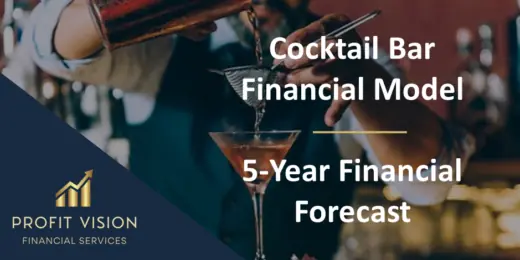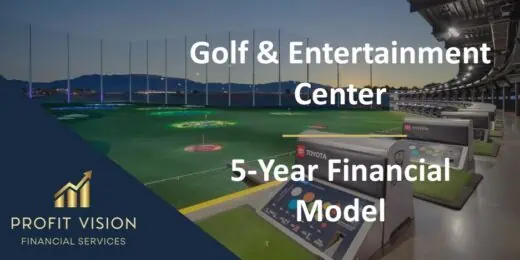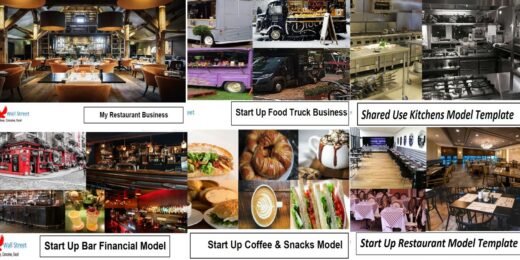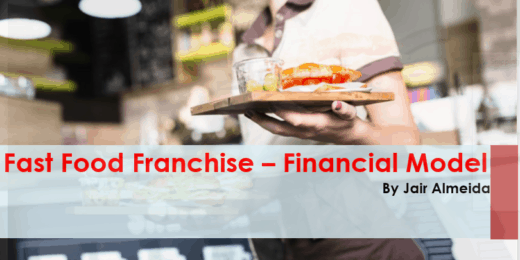Bar & Lounge
These tools provide the analytical foundation for optimized profitability and risk mitigation, which is essential for success in this competitive field.
Food Bar Financial Model 5 year 3 Statement
A comprehensive editable, MS Excel spreadsheet for tracking Food Bar…
Restaurant Finance Model 5 Year 3 Statement
A comprehensive editable, MS Excel spreadsheet for tracking Restaurant finances,…
Coffee Shop Financial Plan and Budget Control
This Excel model is a highly adaptable and user-friendly tool…
Cocktail Bar – 5 Year Financial Model
Financial Model providing an advanced 5-year financial plan for a…
Financial Modeling Mastery Bundle: Diverse Insights for Informed Decision-Making
Unlock financial expertise with our 'Diverse Insights Bundle.' Seven meticulously…
Beverage Trailer (Self-Pour or Manual) 10-year Financial Model
This beverage trailer financial model will provide you with 10…
Food and Beverage (Restaurants, cafes, food trucks, and beverage outlets ) Financial Model Template
Elevate your food and beverage (Restaurants, cafes, food trucks, and…
Golf & Entertainment Center – 5 Year Financial Model
Financial Model providing an advanced 5-year financial plan for a…
Restaurant and Bar Financial Model Template
Financial model template for an eating establishment in which customers…
Light-Meal Food Bar Financial Model-5-year DCF Valuation
This model provides a full 5-year financial model for a…
All Day Bar & Restaurant Financial Model Excel Template
All Day Bar & Restaurant Budget Template There's power in…
Hotel/Guesthouse/Resort Development Model and Valuation – 20 year Three Statement Analysis
This Hotel / Holiday Resort Development Model will take you…
Karaoke Bar Business Plan Financial Model Excel Template
Order Karaoke Bar Pro Forma Projection. Spend less time on…
All-day Restaurant & Bar – 5 Year Financial Model
Financial Model providing an advanced 5-year financial plan for an…
Cigar Lounge Financial Model Excel Template
Order Your Cigar Lounge Pro Forma Projection. There's power in…
Sports Bar Financial Model Excel Template
Discover Sports Bar Financial Model Template. Creates a financial summary…
Sandwich Bar Financial Model Excel Template
Download Sandwich Bar Pro-forma Template. Allows investors and business owners…
Snack Bar Financial Model Excel Template
Get Snack Bar Financial Model Template. Creates 5-year financial projection…
Beer Bar Financial Model Excel Template
Get the Best Beer Bar Financial Plan. Create fully-integrated financial…
Wine Bar Financial Model Excel Template
Download Wine Bar Financial Model. Generate fully-integrated Pro-forma for 5…
Juice Bar- 3 Statement Financial Model with 5 years Monthly Projection and Valuation
This Juice bar FM is a perfect tool for financial…
Multi Cuisine Cafe – 3 Statement Financial Model with 5 years Monthly Projection & Valuation
This Multi-Cuisine Café business Plan Model is a perfect tool…
Brewery – 3 Statement Financial Model with 5 years Monthly Projection & Valuation
This Brewery Business Plan Model is a perfect tool for…
Liquor Store Financial Model Excel Template
Get Your Liquor Store Financial Plan. Creates 5-year Pro-forma financial…
Juice Bar Financial Model Excel Template
Get Your Juice Bar Financial Model. Impress bankers and investors…
A Comprehensive Guide to Bar Investing: How to Financially Succeed in the Bar Business Industry

Brief Overview of the Bar Business Industry
Investing in the bar business industry can be lucrative with proper financial planning and strategy. According to The Business Research Company, the global bar and nightclub industry is estimated to be worth $456.1 billion in 2023 and is projected to increase to $529.76 billion by 2027, showcasing its potential for high returns. However, like any investment, bar investing comes with its own set of financial risks and considerations. In this guide, we will delve into the financial aspects of investing in various types of bars, helping you make an informed decision.
Types of Bars
Before diving into the financial intricacies, it's essential to understand the different types of bars you can invest in. Each comes with its own set of financial implications:
- Sports Bars: Cater to sports enthusiasts and generally require multiple screens and a robust audio-visual setup.
- Cocktail Bars: Focus on high-quality spirits and mixology, often requiring a higher initial investment in inventory.
- Nightclubs: These entertainment venues usually require a significant investment in sound systems, lighting, and marketing.
- Dive Bars: Generally low-key establishments that require a lower initial investment.
- Wine bars: Cater to a more upscale clientele and require an initial investment in a diverse, high-quality wine selection.
- Brewpubs: These bars are unique in that they brew their own beer on-site, which can be both an attraction and a financial challenge.
- Themed Bars: Themed bars, such as tiki bars or retro bars, require a specific kind of décor and possibly specialized menus, adding to the initial investment.
Investment Horizon
When considering investing in a bar, it's crucial to understand your investment horizon. This is when you expect to hold your investment before needing access to your capital. The investment horizon can significantly impact your financial planning and risk tolerance.
Short-Term Investment: A short-term investment horizon may involve setting up a bar with the intention of quickly scaling or flipping it. This strategy often requires a higher initial investment in marketing and premium amenities to rapidly attract a large customer base. The financial models for short-term investments focus on quick revenue generation and cost recovery.
Long-Term Investment: A long-term investment strategy usually involves a more phased approach to scaling the business. The financial models for long-term investments are more complex, considering factors like market trends, inflation, and long-term lease agreements.
Why Invest in the Bar Business?
Investing in a bar business can offer several financial advantages:
High-Profit Margins: Bars often enjoy high-profit margins, especially those that offer premium beverages and experiences. Financial models can help you optimize pricing strategies to maximize these margins.
Social Hub: Bars serve as social hubs, attracting steady customers. This consistent footfall can translate into stable revenue, making it an attractive financial investment.
Lifestyle Business: If you enjoy socializing and making new friends, owning a bar can also serve as a lifestyle business. It offers you the opportunity to combine your social interests with a profitable venture, adding another dimension to why you might consider this type of investment.
Resilience During Economic Downturns: The bar industry often shows resilience during economic downturns. People may cut back on other expenditures but still allocate funds for socializing, providing financial stability to your investment.
Main Challenges
While bar investing can be lucrative, it's not without its challenges:
- Location Selection: The location can make or break your bar business. High-traffic locations often come with higher rent but can result in increased revenue. Financial models can help you assess the trade-offs.
- Licensing and Regulations: Obtaining the necessary licenses can be both time-consuming and expensive. Budget for this in your initial financial planning.
- Staffing: Skilled staff are essential for the bar business but come at a cost. Your financial model should account for salaries, training, and employee turnover.
- Inventory Management: Efficient inventory management is crucial for maintaining profitability. Overstocking can result in wastage, while understocking can lead to lost sales.
- Exit Strategy: Whether you're looking at a short-term or long-term investment, having an exit strategy is crucial. Financial models can help you evaluate the resale value of your business and the potential returns on your investment.
Importance of Thorough Planning and Analysis
Investing in a bar business requires meticulous financial planning and analysis. Utilizing financial models can help you forecast revenue, assess risks, and plan for various financial scenarios. At eFinancialModels, we offer specialized financial model templates designed for the bar business, aiding you in making informed financial decisions.
Key Financial Benefits when Investing in a Bar Business

For several reasons, investing in a bar business can be financially rewarding. Here are some key financial benefits to consider:
Stable Revenue Streams: Bars often have multiple revenue streams, including beverage sales, food, events, and sometimes even merchandise. This diversification can lead to a more stable and predictable cash flow, making it a financially sound investment.
High Customer Loyalty: Bars, especially niche or themed establishments, often enjoy high customer loyalty. A loyal customer base can significantly reduce marketing costs and increase the lifetime value of each customer, positively impacting your financial projections.
Less Volatile Compared to Other Industries: The bar industry is generally less susceptible to economic downturns compared to other sectors. This resilience can provide a safety net for your investment, ensuring more consistent returns.
How do you select a location for your bar?
Choosing the right location for your bar is a critical financial decision that can significantly impact the success of your investment. Here's how to go about it:
Type of Bar and Aligning with Target Audience
The type of bar you choose—be it a sports bar, cocktail bar, or nightclub—will influence your target audience and, consequently, your revenue streams. For instance, sports bars may attract a demographic that values a casual atmosphere and may spend more during game seasons. Understanding this alignment is crucial for accurate financial modeling.
Market Analysis
Competitor Analysis: Knowing your competition can help you identify gaps in the market and potential opportunities for higher profit margins. Financial models can incorporate competitor pricing and customer reviews to forecast potential revenue.
Demographics: Understanding the demographics of your chosen location can help you tailor your offerings and pricing strategy, impacting your revenue and profitability.
Future Market Trends: Being aware of future market trends can help you adapt your business model to stay ahead of the curve, safeguarding your investment in the long term.
Location Analysis
Foot Traffic: Locations with high foot traffic often result in higher sales but may come with increased rent. A detailed financial analysis can help you determine if the higher costs justify the potential for increased revenue.
Proximity to Other Businesses: Being near complementary businesses like restaurants or theaters can boost foot traffic. However, proximity to competitors may split customer attention and affect sales.
Safety and Accessibility: Locations that are safe and easily accessible can attract a broader customer base, positively impacting your financial projections.
Financial Planning and Analysis
Investing in a bar business is not just about choosing the right location or creating an appealing ambiance; it's fundamentally about understanding the financial dynamics that drive profitability. In this guide, we'll delve into the critical financial planning and analysis aspects that every prospective bar business investor should consider.
Revenue Streams
Drinks: Beverage sales are often the cornerstone of a bar's revenue. The markup on alcoholic beverages can be substantial, offering high-profit margins. Bar financial models can help you optimize your drink menu and pricing to maximize revenue.
Food: Offering food diversifies your revenue streams and increases the average time a customer spends at your bar, potentially leading to higher sales. However, it also involves additional costs like kitchen staff and inventory.
Events and Promotions: Hosting events or running promotions can attract a larger crowd, boosting sales temporarily. These should be factored into your financial models to forecast their impact on annual revenue.
Operating Expenses (OPEX)
Staff Wages: Labor costs are often one of the most significant operating expenses. Financial planning should account for not just salaries but also benefits and potential overtime.
Utilities: Utilities like electricity, water, and internet are recurring expenses that can add up. Energy-efficient appliances and fixtures can be a long-term saving strategy.
Licenses and Permits: The cost of obtaining and renewing licenses should be factored into your financial planning as they can be substantial and often require annual renewal.
Net Operating Income (NOI)
Your NOI is the revenue remaining after deducting all operating expenses. It's a crucial metric that investors look at to gauge the profitability of a business. Financial models can help you project your NOI under different scenarios.
Capital Expenditure (CAPEX)
Initial Setup Costs: These are the one-time costs involved in setting up your bar, including furniture, fixtures, and initial inventory. These costs should be amortized over their useful life in your financial models.
Ongoing Maintenance: Regular maintenance costs for equipment and fixtures should be accounted for in your financial planning.
Financing Options
Bank Loans: Bank loans are a common financing option but come with interest payments that need to be factored into your financial models.
Investor Funding: Taking on investors can provide a significant capital infusion but usually at the cost of equity and some control over the business.
Crowdfunding: Crowdfunding can be an innovative way to raise funds but may require a compelling marketing strategy to attract potential backers.
Regulatory Compliance and Taxes
Licensing Requirements: Failure to comply with licensing requirements can result in hefty fines and even business closure, severely impacting your financial projections.
Health and Safety Regulations: Compliance with health and safety regulations may require additional investment in safety equipment and training.
Tax Obligations: Understanding your tax obligations can help you plan for these expenses and avoid any penalties that could impact your NOI.
How to Manage and Operate Your Bar
Owning a bar is not just about pouring drinks and playing good music; it's a complex business venture that requires meticulous financial management and strategic planning. In this guide, we'll explore the financial aspects of managing and operating a bar, as well as the different exit strategies you can consider.
Staffing: Hiring, Training, and Staff Management
The cost of staffing goes beyond just salaries. It includes recruitment costs, training programs, and employee benefits. High staff turnover can also be financially draining due to the recurring costs of hiring and training. Effective staff management can not only reduce these costs but also improve customer service, leading to higher sales.
Inventory Management: Stocking and Inventory Turnover
Inventory is often the second-largest expense for bars after staffing. Efficient inventory management can significantly impact your bottom line. Overstocking increases holding costs and potential wastage, while understocking can result in lost sales. A well-managed inventory system can optimize your stock levels and improve cash flow.
Marketing and Customer Engagement: Social Media, Loyalty Programs, Events, and Promotions
Marketing expenses can quickly add up, but they are essential for attracting and retaining customers. Social media campaigns and loyalty programs often provide a high return on investment (ROI) if executed correctly. Events and promotions can be costly but can also drive significant footfall if well-planned. Financial models can help you allocate your marketing budget effectively to maximize ROI.
Exit Strategy for Selling a Bar
Selling the Business
Selling your bar can provide a substantial return on investment, but the selling price will depend on various factors like location, profitability, and market conditions. A well-maintained financial record can significantly increase the valuation when selling a bar.
Franchising
Franchising your bar concept can be a lucrative exit strategy that allows you to expand your brand without the financial risks associated with opening new locations. However, it requires an upfront investment in legal and marketing efforts to attract potential franchisees, especially if you're considering selling a bar and turning it into a franchise.
Liquidation
Liquidation is often the last resort and usually results in the lowest return on investment. However, it can be the quickest way to exit the business and recover some of your initial investment. Financial models can help you estimate the potential returns from liquidating assets and settling liabilities when selling a bar.
Bar Financial Modeling: Essential for Success in the Bar Industry
In the competitive landscape of the bar business, making informed decisions in the bar industry is not just an advantage—it's a necessity. One of the most effective tools for this is financial modeling. In this guide, we'll explore why using a bar financial model is indispensable for analyzing opportunities in the bar business from an investment standpoint.
Importance of Financial Modeling
Financial modeling serves as the backbone of any investment decision in the bar industry. It allows you to simulate various scenarios and their financial outcomes, helping you understand the viability and profitability of your investment. It's not just about number-crunching; it's about translating those numbers into actionable business strategies.
Revenue Forecasting
One of the most critical aspects of bar financial modeling is revenue forecasting. By analyzing factors like location, target audience, and market trends, a well-crafted bar financial model can provide a realistic estimate of your potential revenue streams. This is crucial for understanding whether your bar business can not only sustain itself but also provide the returns you seek.
Expense Management
A financial model helps you categorize and estimate your operating expenses and capital expenditures. This is vital for cash flow management, ensuring you have enough liquidity to operate smoothly. It also helps you identify areas where cost optimization can improve profitability.
Return on Investment (ROI) Analysis
ROI is the ultimate metric that investors look at to gauge the success of an investment. A comprehensive bar financial model will include ROI analysis based on the projected revenue and expenses, helping you understand the potential profitability of your bar business. This can be a decisive factor in whether to proceed with financing a pub, modify your business plan, or seek alternative opportunities.
Financial Analysis and Bar Modeling: Essential Keys to Long-Term Bar Success
In the ever-competitive landscape of the bar industry, the margin between success and failure often comes down to the quality of your financial analysis. As we've explored in this comprehensive guide, understanding the financial intricacies of your bar business isn't just an added advantage—it's a fundamental necessity.
From the initial stages of selecting a location and type of bar, to the complexities of staffing, inventory management, and marketing, every decision has financial implications. These choices collectively shape your revenue streams, operating expenses, and ultimately, your return on investment (ROI).
Bar Financial modeling serves as the linchpin in this intricate mechanism. It allows you to simulate various business scenarios, providing a 360-degree view of your financial landscape. Whether it's forecasting revenue, managing expenses, or analyzing ROI, a well-crafted bar financial model is your most reliable tool for making informed decisions. It reduces investment risks and enhances your ability to adapt to market trends and challenges.
At eFinancialModels, we understand the pivotal role that financial analysis plays in the success of a bar business. Our platform offers specialized financial model templates designed to navigate the complexities of this industry. These expert-crafted templates serve as a roadmap, guiding you through each financial decision, ensuring that your investment is not just sound but also lucrative.
In summary, a thorough financial analysis is not just a best practice; it's the cornerstone of sustainable success in the bar industry. It equips you with the insights needed to turn challenges into opportunities and uncertainties into strategic advantages, whether you're investing in a bar, financing a pub, or even selling a bar.

































